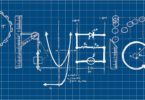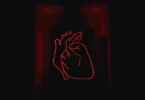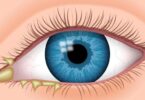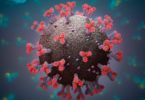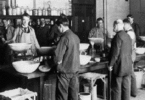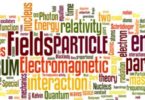The Liver Anatomy Quiz:
The liver is called the reticular gland because
(a) The shape is reticular
(b) It contains reticular tissue
(c) Lobules branches and anastomose with one another to form a network
(d) Hepatic duct and cystic duct unite to form the bile duct
One of the following is the specific function of the liver. Mark it
(a) Excretion
(b) Glycogenolysis
(c) Digestion
(d) Histolysis
In the human digestive system, bile is secreted by:
(a) pancreas
(b) liver
(c) kidneys
(d) stomach
In the liver, alcohol is converted into a toxic substance.
(a) Formic acid
(b) Acetaldehyde
(c) Nicotine
(d) Urea
Liver sinusoids are lined by
(a) Parenchymal cells
(b) Endothelial cells
(c) Kupffer cells
(d) Goblet cells
Related: protists quiz
Which of the following is the correct statement regarding bile?
(a) secreted by bile duct and stored in the liver
(b) secreted by the gall bladder and stored in the liver
(c) secreted by bile and stored in a bile duct
(d) secreted by the liver and stored in the gall bladder
About 1/6 part of the liver is occupied by one of the following lobes of liver
(a) Left lobe
(b) Right lobe
(c) Spigelian
(d) None
Caudate is a part of
(a) Left lobe of liver
(b) Right lobe of liver
(c) Spigelian lobe of liver
(d) All of the above
Which one of the following statements about glycogen is correct?
(a) It is a disaccharide stored in the liver which can react with ammonia to form proteins.
(b) It is synthesised in the liver and takes part in the formation of bile and lipase, besides being a source of energy.
(c) It is a polysaccharide which is synthesised and stored in liver cells.
(d) It is synthesised in blood and stored in the liver and muscles to provide glucose in times of need.
Related: optical Isomers octahedral quiz
Liver in our body stores
(a) Vitamin A
(b) Vitamin D
(c) Vitamin B12
(d) All of these
Cells of the liver manufacture
(a) Diastase
(b) Amylase
(c) Lipase
(d) Insulin
Synthesis of glycogen from sugar in the liver is known as
(a) Glycogenesis
(b) Glycolysis
(c) Glycogenolysis
(d) Glucolysis
Bile salt
(a) Acts as emulsifying agent
(b) Helps in absorption of fatty acids, cholesterol etc.
(c) Stimulates the bile production in liver
(d) All of the above
Related: organic chemistry nomenclature worksheet with answers
How many ATP molecules are released when 1 molecule of glucose is oxidized in our liver cells?
(a) 36
(b) 38
(c) 2
(d) 8
The liver of the rabbit is made up of
(a) 4 lobes
(b) 6 lobes
(c) 5 lobes
(d) 7 lobes
Kupffer cells of the liver are
(a) Loose connective tissue
(b) Phagocytic cell
(c) Mast cell
(d) Fat cell
Fish–liver oils contain large amounts of
(a) Vitamin K
(b) Vitamin E
(c) Vitamins A and D
(d) Vitamins B2 and C
Related: which of the following is not a polymer?
Which part of alimentary canal receives bile from the liver?
(a) oesophagus
(b) small intestine
(c) stomach
(d) large intestine
The bile secreted by the liver cells passes into the gall bladder through
(a) Hepato–pancreatic duct
(b) Cystic duct
(c) Hepatic duct
(d) Hepato–gall duct
The inner lining of the gut, stomach and liver is composed of
(a) Simple squamous epithelium
(b) Simple columnar epithelium
(c) Simple cuboidal epithelium
(d) Compound epithelium
Tonics made out of the liver are very effective in curing haematopoiesis or anaemias because
(a) They contain proteins
(b) They contain RBCs
(c) They contain bile juice
(d) They contain vitamin B12
Related: genetic engineering questions worksheet answers
The toxic substances are detoxicated in the human body by
(a) Lungs
(b) Kidneys
(c) Liver
(d) Stomach
In man, the bile juice secreted per day is
(a) 700 ml
(b) 800 ml
(c) 900 ml
(d) 600 ml
In people addicted to alcohol, the liver gets damaged because it
(a) Has to detoxify the alcohol
(b) Store excess of glycogen
(c) Stimulated to secrete bile
(d) Accumulates excess of fats
Liver does not synthesize
(a) Fibrinogen
(b) Albumin
(c) Prothrombin
(d) Gamma globulin
Related: glycolysis quiz
The glucose is converted into glycogen in liver and stored in
(a) Liver
(b) Liver and muscles
(c) Liver and spleen
(d) Spleen and muscles
Which is the largest lobe of the liver?
(a) Right lobe
(b) Left lobe
(c) Both are equal
(d) None of them
Which of the following carries glucose from the digestive tract to the liver?
(a) Hepatic artery
(b) Pulmonary vein
(c) Hepatic portal vein
(d) Renal portal system
Which of the following clotting factor is not formed by liver
(a) I
(b) II
(c) IV
(d) VIII
Related: mole concept multiple choice questions
From the point of ontogeny, the liver is
(a) Ectodermal
(b) Endodermal
(c) Mesodermal
(d) Both ectodermal and endodermal
The liver of a carnivorous is larger than the herbivorous, because in carnivorous
(a) Their bodies are also big
(b) The diet contains many more protein, so the liver has to do more work.
(c) The problem of phagocytosis by Kupffer cells is more
(d) None of the above

